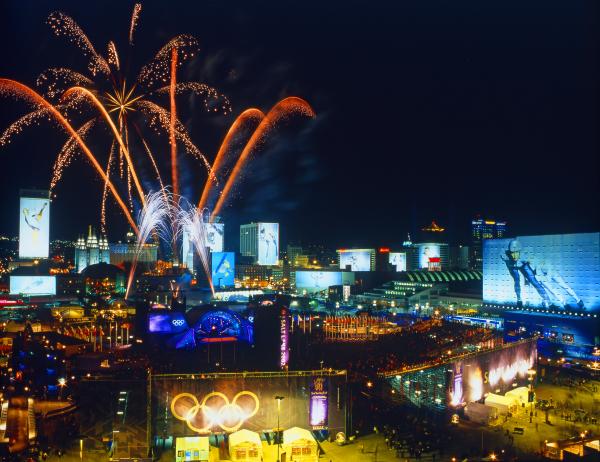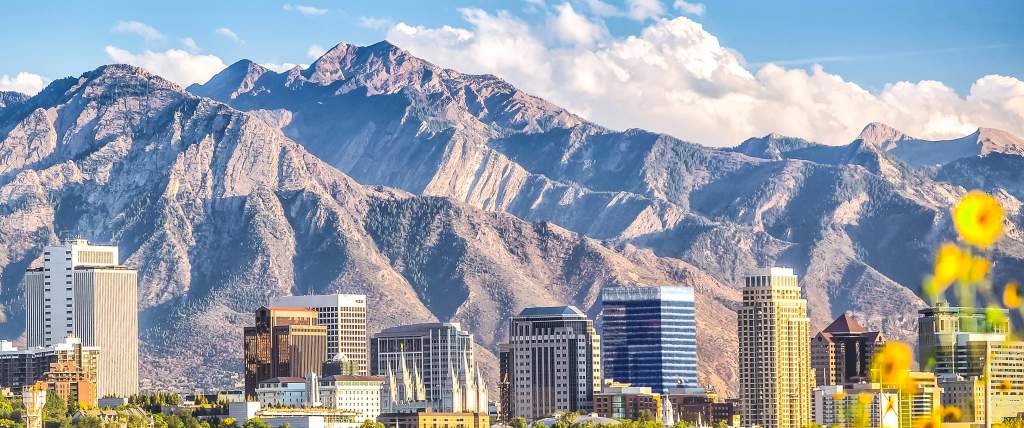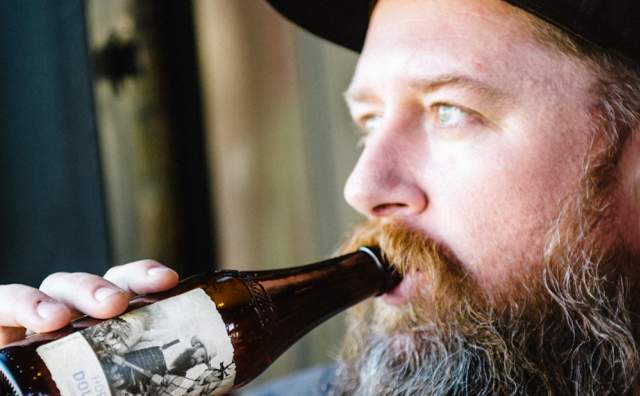The History of Salt Lake
Long before this Wasatch mountain valley was home to over a million people, a bustling downtown, multiple universities, a dedicated ski scene, and a smattering of hip walkable neighborhoods, it was a peaceful grassland with a stunning alpine skyline.
 Early History of Salt Lake
Early History of Salt Lake
The land that we now call Utah was first inhabited by the ancient Pueblo people, who are sometimes called Anasazi. Later on, the Ute tribe, which the state is named for, settled in the area. Other Native American peoples like the Shoshone, Navajo, Paiute, and Goshute also called the area home.
Although Spanish Franciscan Missionary Silvestre Velez de Escalante explored Utah, he only went as far as Utah Valley. The area was first surveyed by US Army Officer John C. Fremont in 1843. In 1846, the ill-fated Donner Party trekked across the valley through Emigration Canyon, which continued to be the main path into Salt Lake for many years.
Pioneer History of Salt Lake
On July 24, 1847, members of The Church of Jesus Christ of Latter-day Saints (aka Mormons) settled the northern end of the Salt Lake Valley to the east of the Great Salt Lake. They named the settlement, Great Salt Lake City.
Originally settled by Church of Jesus Christ of Latter-day Saint Pioneers to be an autonomous religious community led by Church leader Brigham Young and an appointed High Council, this system was later replaced with an elected city council and mayor.
 Early pioneers survived in the mountain desert by sharing a communal crops and water sources. This highly organized system can still be seen in the design of the city’s large blocks and zoning laws. These early settlers came from across Europe and brought with them their language, food, and culture.
Early pioneers survived in the mountain desert by sharing a communal crops and water sources. This highly organized system can still be seen in the design of the city’s large blocks and zoning laws. These early settlers came from across Europe and brought with them their language, food, and culture.
Around this same time, the California Gold Rush brought many other folks to Salt Lake. Miners, adventurers, ranchers, and cowboys came to the area following the westward roads. Salt Lake became a vital trading post for farmers and merchants.
In 1850, the Utah Territory, which had previously belonged to Mexico, was organized by US Congress. Shortly after that the city was formally recognized as “The City of Great Salt Lake.” A few short years later, the territorial capital was moved from Fillmore, Utah to Salt Lake where it has stayed ever since. In 1856, the name was officially changed to “Salt Lake City.”
By 1857, public outcry against the Church practice of polygamy came to a head. President James Buchannan sent an army of 2,500 soldiers to investigate the LDS Church and install a non-LDS governor. In response, Brigham Young imposed martial law thus beginning the Utah War. Eventually, Young and his militia surrendered to federal control. Alfred Cumming became the new territorial governor on April 12, 1858. With the American Civil War erupting, most troops left the area.
Within a few years however, the US Army was back. These troops settled at Fort Douglas (next to the University of Utah). Here they established a close network of non-LDS businesses and bankers. The troops also discovered gold and silver in the Wasatch Mountains.
In 1868, Young was credited with founding the Zion’s Co-operative Mercantile Institution (ZCMI), frequently hailed as one of the first department stores in the nation. Today, the façade can still be seen on the Macy’s Store at City Creek Center.
 Then in 1869, Salt Lake Changed again with the completing of the first transcontinental railroad at Promontory Summit. By 1870, train transportation had opened Salt Lake up to the world. People poured into the area looking for work in mining and other industries.
Then in 1869, Salt Lake Changed again with the completing of the first transcontinental railroad at Promontory Summit. By 1870, train transportation had opened Salt Lake up to the world. People poured into the area looking for work in mining and other industries.
Meanwhile, city government was dominated by the LDS-controlled People’s Party. Conflict between LDS city government and non-LDS federal authorities stationed in Fort Douglas and Sugar House often continued. Most famously, Salt Lake City Mayor Daniel H. Wells declared martial law when US Marshals arrested city police and took control of the national election in 1874. Wells was arrested and soon released.
Then in the 1880s, the Edmunds-Tucker Act systematically denied LDS Church members the right to vote or hold office if they were also polygamists. The Liberal Party took control of local government in 1890. However, both parties soon dissolved anticipating statehood.
Salt Lake became the capital of the state of Utah on January 4, 1896 when Utah entered the union following US President Grover Cleveland’s decree. To achieve statehood, the LDS Church agreed to ban polygamy. Notably, the state also elected its first female State Senator, Martha Hughes Cannon (who defeated her own husband) that year. With Cannon’s leadership, Utah became the third state in the Union to give women the right to vote.
The 20th Century
The early 1900s saw the development of much of modern-day Salt Lake. The State Capitol and other historical buildings were constructed. A streetcar line was installed and brought people from the surrounding neighborhoods to and from downtown. City parks, sewer systems, street lighting, and streets were built.
In 1911, Salt Lake adopted a non-partisan city council easing LDS/non-LDS tensions. However, this agreement was soon tested as the Great Depression hit the area. Unemployment peaked at 36%, and annual per capital income was just $276. The dwindling mining industry was replaced by the fledgling ski industry. The first rope tows and ski lodge were built in Brighton. And Salt Lakers who could afford a car would take a scenic drive up the rugged canyon roads to try their hand at skiing. The local economy did not fully recover until after World War II.

The war led to an influx of defense industries along the Wasatch Front as demand for raw materials from Utah’s mines grew. And the military presence continued to grow with Hill Air Force Base added to the mix.
As Salt Lake continued to grow through the 1960s several commercial and business centers were built in the suburbs. To counteract this change and encourage folks to stay near the area, the LDS Church invested in a downtown shopping mall, ZCMI. (It was a pattern the LDS Church would repeat in 2014 with opening of the City Creek Center and renovations at Historic Temple Square.) Ski resorts continued to be built along the Wasatch during this time.

The economy continued to grow as more and more buildings went up so too did tourism to the area. Eventually city blocks were developed, a convention center was built, an airport was constructed, and parks and other public buildings were restored.
 Modern Day Pioneers in Salt Lake
Modern Day Pioneers in Salt Lake
All this growth culminated in the 2002 Winter Olympic Games. The area underwent a huge burst of construction with hotels, venues, restaurants, businesses, and shops to accommodate visitors. The city and county have worked together to find new uses for these old buildings and continue to maintain them.
Around the same time major reconstruction was completed on I-15, a major highway the bisects the city and takes travelers from Downtown in the north straight to Draper in the south. And the state reinvested in public transit, bringing back the light rail that had shut down in 1941. Portions of TRAX now run in the same place as Salt Lake’s first streetcar. Buses and a commuter line also take folks around the Valley.
There are other parallels between early Salt Lake history and changes taking place now. Early Pioneers famously distilled “Valley Tan” a brew so potent that Mark Twain said it was made of fire and brimstone. Today, you can try a Polygamy Porter made by Wasatch Brewery or brave Valley Tan yourself at High West Distillery. There’s even a gin named for one of Brigham Young’s children, Madam Pattrini, distilled by Ogden’s Own. You’ll also find a bustling food scene bursting with local ingredients from the gardens, hives, farms, and orchards of the area.
The city has continued to grow and embrace its identity as folks here continue to pioneer a new way forward.
Jason Stock
Most people are surprised to learn about Salt Lake's rich brewing and distilling…

